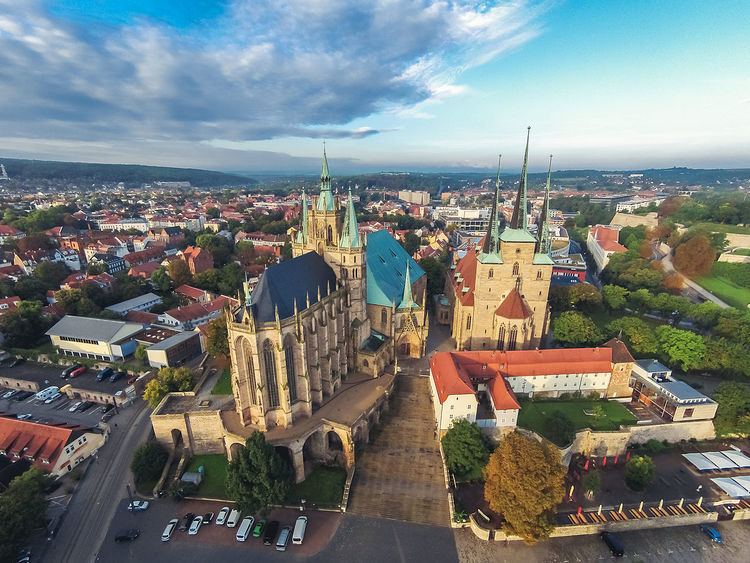Location Erfurt Denomination Roman Catholic Status Active Architectural type Church | Country Germany Founded 14th century Phone +49 361 576960 | |
 | ||
Website Website of the Cathedral Address Domstufen 1, 99084 Erfurt, Germany Diocese Roman Catholic Diocese of Erfurt Architectural styles Romanesque architecture, Gothic architecture Similar Domplatz, Krämerbrücke, Zitadelle Petersberg, Erfurt Synagogue, Predigerkirche | ||
Inside the erfurt cathedral mariendom
The Catholic Erfurt Cathedral is a 1200-year-old church located on Cathedral Hill of Erfurt, in Thuringia, Germany. It is of an International Gothic style, and is also known as St Mary's Cathedral, and is located, uniquely, on a hillside.
Contents
It is the episcopal seat of the Roman Catholic Diocese of Erfurt.
History
The site of the present Cathedral has been the location of many other Christian buildings, for example a Romanesque basilica and a church hall. Martin Luther was ordained in the cathedral in 1507. Saint Boniface erected a church in the year 724 on the mound which the Erfurt Cathedral now sits. The foundations of the original church were used for a Romanesque basilica in the mid 12th century. The mound was then enlarged in the early 14th century to make room for the St. Mary's cathedral.
Architecture
The architecture of the Erfurt Cathedral is mainly Gothic and stems from around the 14th and 15th centuries. There are many things of note as far as the architecture is concerned, not least the stained glass windows and furnishings of the interior of the cathedral. The central spire of the three towers that sit aloft the cathedral harbours the Maria Gloriosa which, at the time of its casting by Geert van Wou in 1497, was the world's largest free-swinging bell. It is the largest existing medieval bell in the world. It is known to have purity and beauty of tone.
Relics and treasures
The cathedral houses many rare and rich furnishings and sculptures, including the tomb of the bigamous Count von Gleichen, accompanied by both of his wives, a stucco altar, a bronze candelebra of Romanesque antiquity called Wolfram, the oldest free standing cast work in Germany, and, out on the porch, several statues of the Wise and Foolish Virgins.
